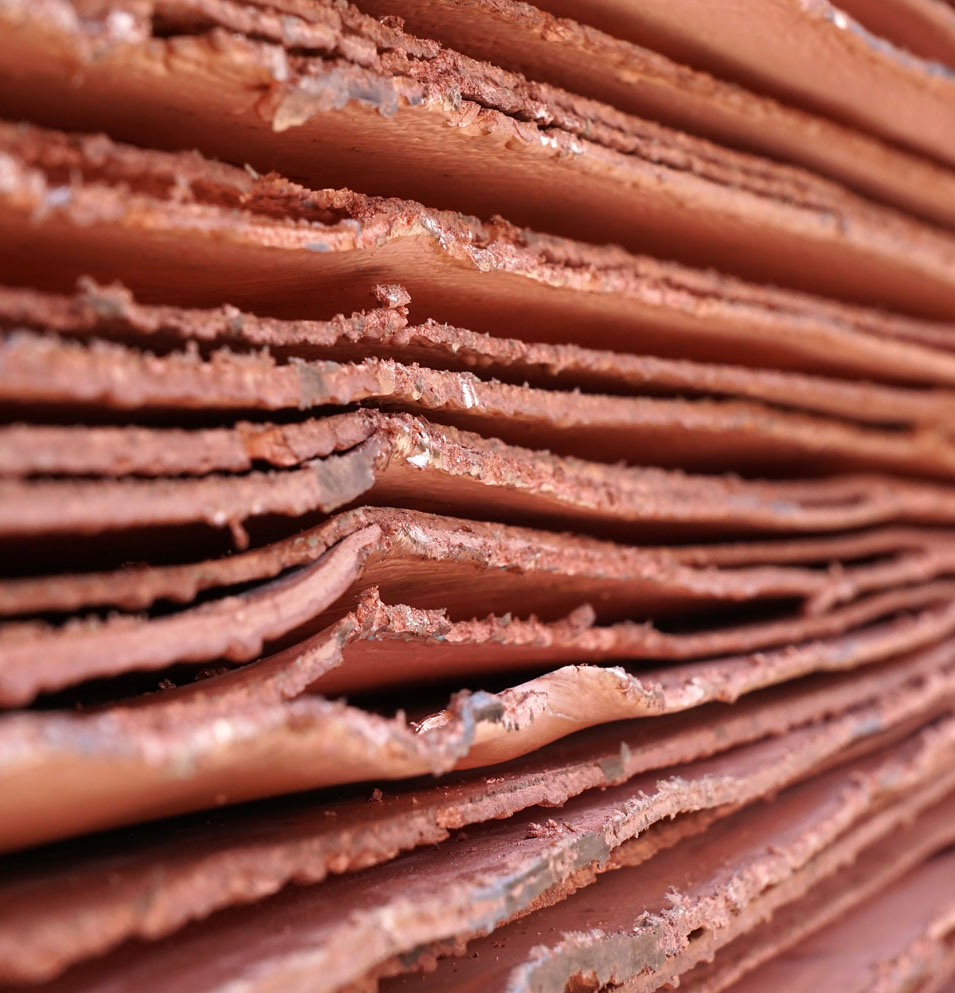
Outlook on Copper Scrap Processing
According to the most accurate statistics available, the trading of Copper Scrap worldwide is approximately 1/3 of the total production of refined Copper produced by mines.
The largest portion of copper produced, either from primary or secondary sources, goes to the cable industry in form or Copper rod (65% ÷ 70%). The remaining portion goes into semis such as slab and billets or into remelt forms such as ingots.
The reclamation of Copper scrap, properly refined and alloyed (if necessary) is a valid alternative to the use of Copper cathodes in several industries, as Copper can be recycled theoretically an infinite number of times.
In general terms, we can say that the Copper scrap can be sourced out of:
- Rejected material from production process (cathodes, rod, wires, billets, slabs, ingots and similar)
- Waste resulting from demolition of installed Copper material (tubes, wires, sheets and similar)
- Waste resulting from machining cycles such as borings and turnings
- Brass alloy in different composition and shapes;
- Bronze alloys in different composition and shapes.
The recycling process starts with accurate sorting followed by crushing, drying, separation etc, in order to render the scrap suitable for the smelting and alloying operations.
The Engitec
Ecuprex Process
The ECUPREX process is a proprietary Engitec hydrometallurgical – electrochemical system designed to recover pure copper from:
- Primary copper sulphide minerals,
- Secondary copper sulphide minerals
- Secondary copper materials and scrap copper metal.
The process, using a fluoborate electrolyte, is based on two main steps:
- The oxidative leaching of copper compounds (metal and secondary sulphides)
- The Electrowinning of the leachate in a diaphragm divided cell
The Electrowinning cell is the core of the process. In the unique cell, copper is plated at the cathode and the oxidizing component is regenerated at the anode to be recycled back to leaching. This unique cell design allows the system to operate in a closed loop with no effluent discharge.
The process has been successfully tested in a small-scale pilot plant on:
- Various type of Copper scrap
- Secondary Copper sulphide concentrates
- Copper matte/white metal
The process is also suitable to accept some copper bearing liquid streams through the precipitation of copper and its recovery in cathode form. This approach was successfully tested, for example, on the regeneration of pickling solutions coming from printed circuit board production. The treatment of primary copper concentrates has to undergo a pre-treatment to convert the primary copper sulphide into a suitable copper compound.







